An anamorphic is a puzzle based on a special kind of secret writing. Here are two postcards with anamorphic motives. Can you decrypt them?
While the secret writing used for anamorphics is certainly not suited for keeping a message secret, it makes nice puzzles. Here is an example on a postcard from 1905, provided to me by Tobias Schrödel:
To read the message, we need to compress the writing. Here’s what we get after a horizontal compression (turned by 90 degrees):
And here’s the result of a vertical compression:
A French card
The afore-mentioned anamorphic postcard is not the only one in Tobias’ collection. Here’s another one he provided me (it’s from 1905, too):
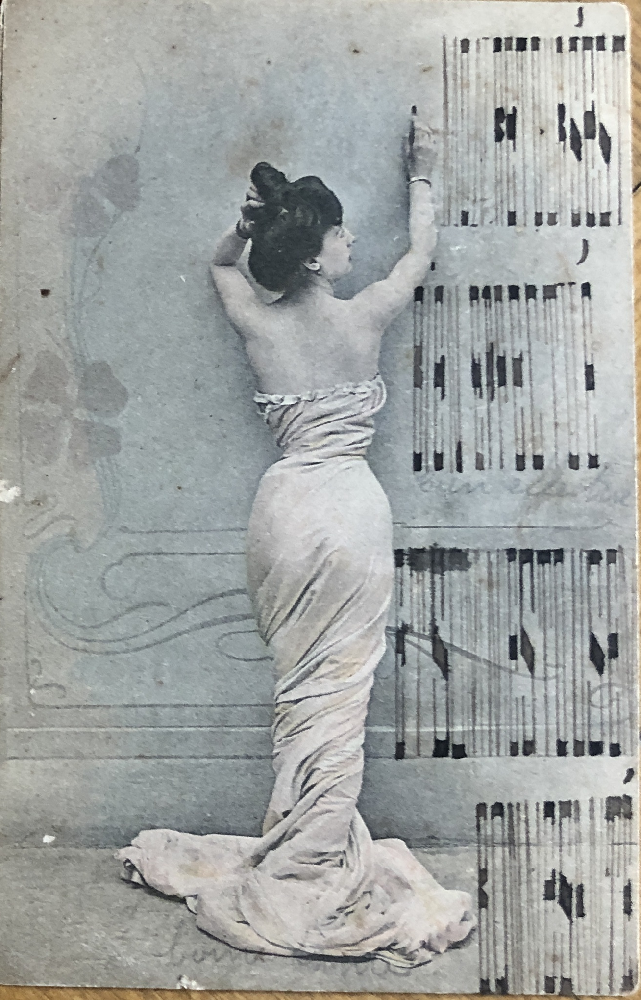
Tobias Schrödel (used with permission)
Can a reader decode it? The text side of the card is not relevant for us, but it is reproduced here anyway.
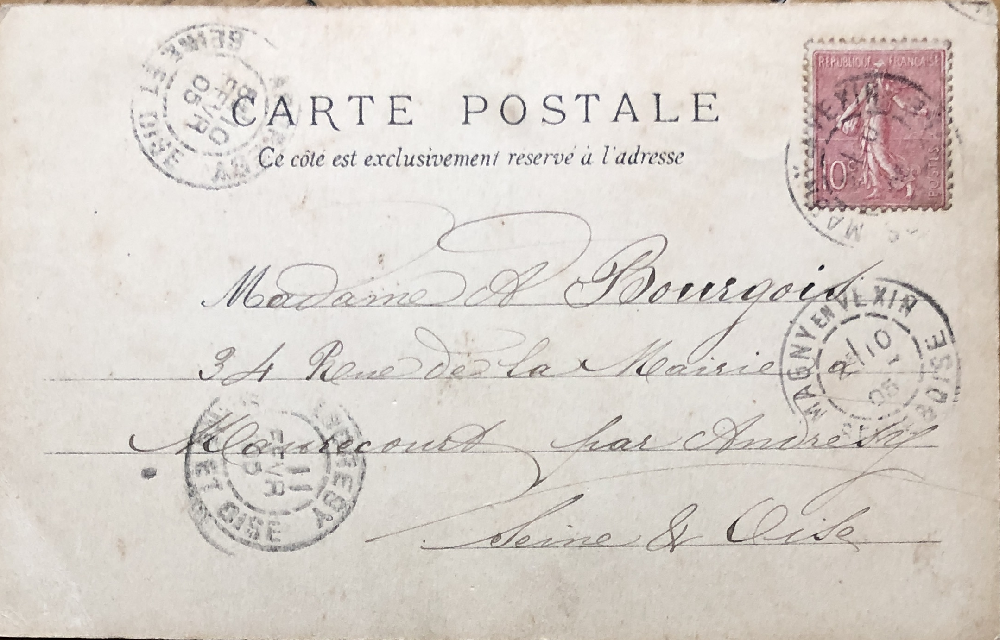
Tobias Schrödel (used with permission)
The Frauenlob card
Another anamorphic postcard I recently received was sent to me by Karsten Hansky.
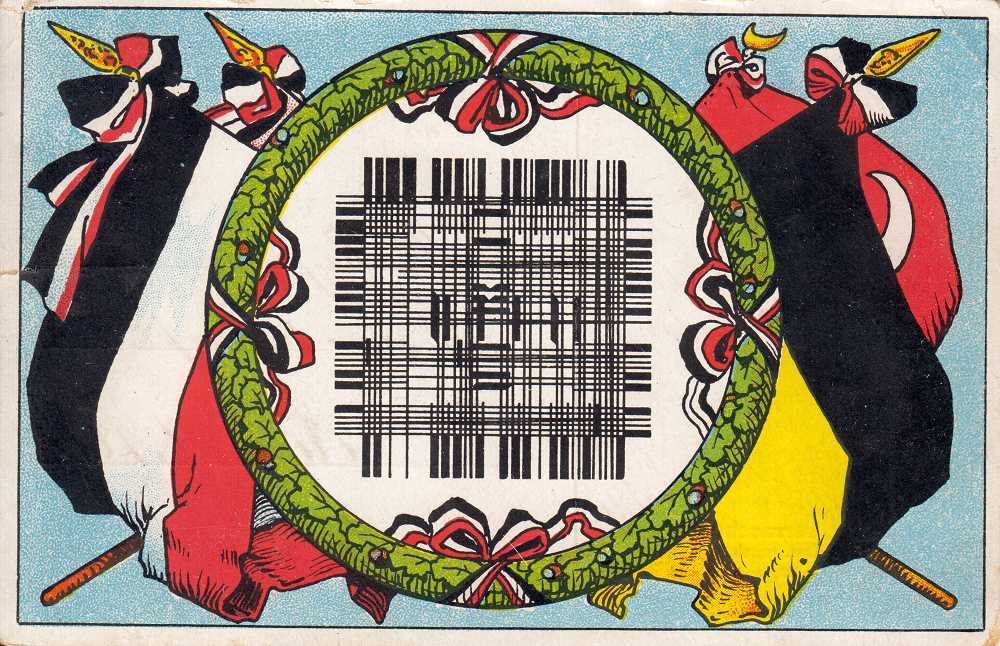
Karsten Hansky (used with permission)
If you decrypt it you will see that the plaintext is a German patriotic parole from the First World War. The stamp on the text side of the card contains the expression “Frauenlob”.
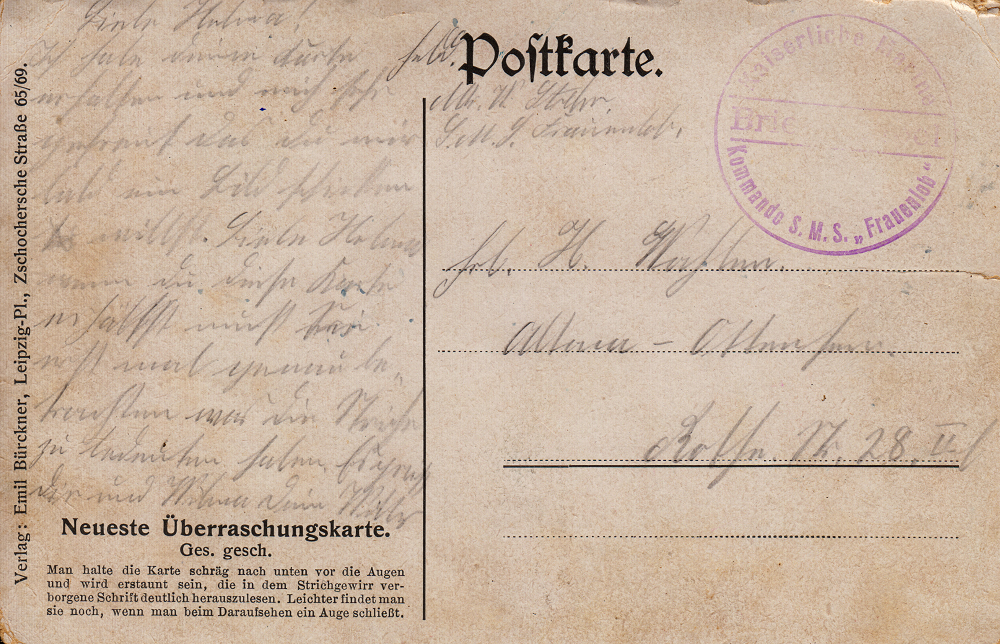
Karsten Hansky (used with permission)
As Karsten found out, the “Frauenlob” (“praise women”) was a German battleship in WW1. It sank in 1916 during the Battle of Jutland.

Wikimedia Commons
I don’t see a year mentioned on the postcard, but I guess it was printed and written between 1914 and 1916 (i.e., between the beginning of the war and the sinking of the ship). Can a reader find out more about the background of this card?
Follow @KlausSchmeh
Further reading: The Top 50 unsolved encrypted messages: 4. Kryptos
Linkedin: https://www.linkedin.com/groups/13501820
Facebook: https://www.facebook.com/groups/763282653806483/

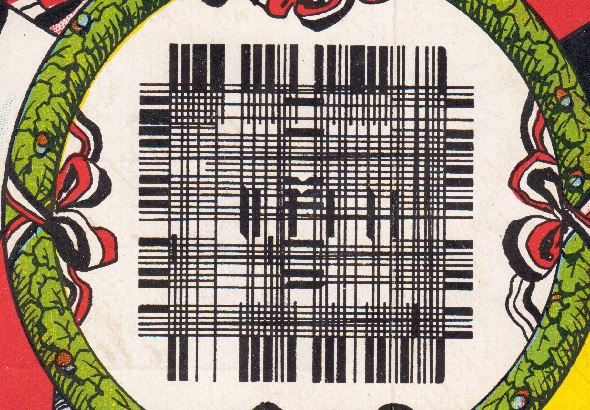
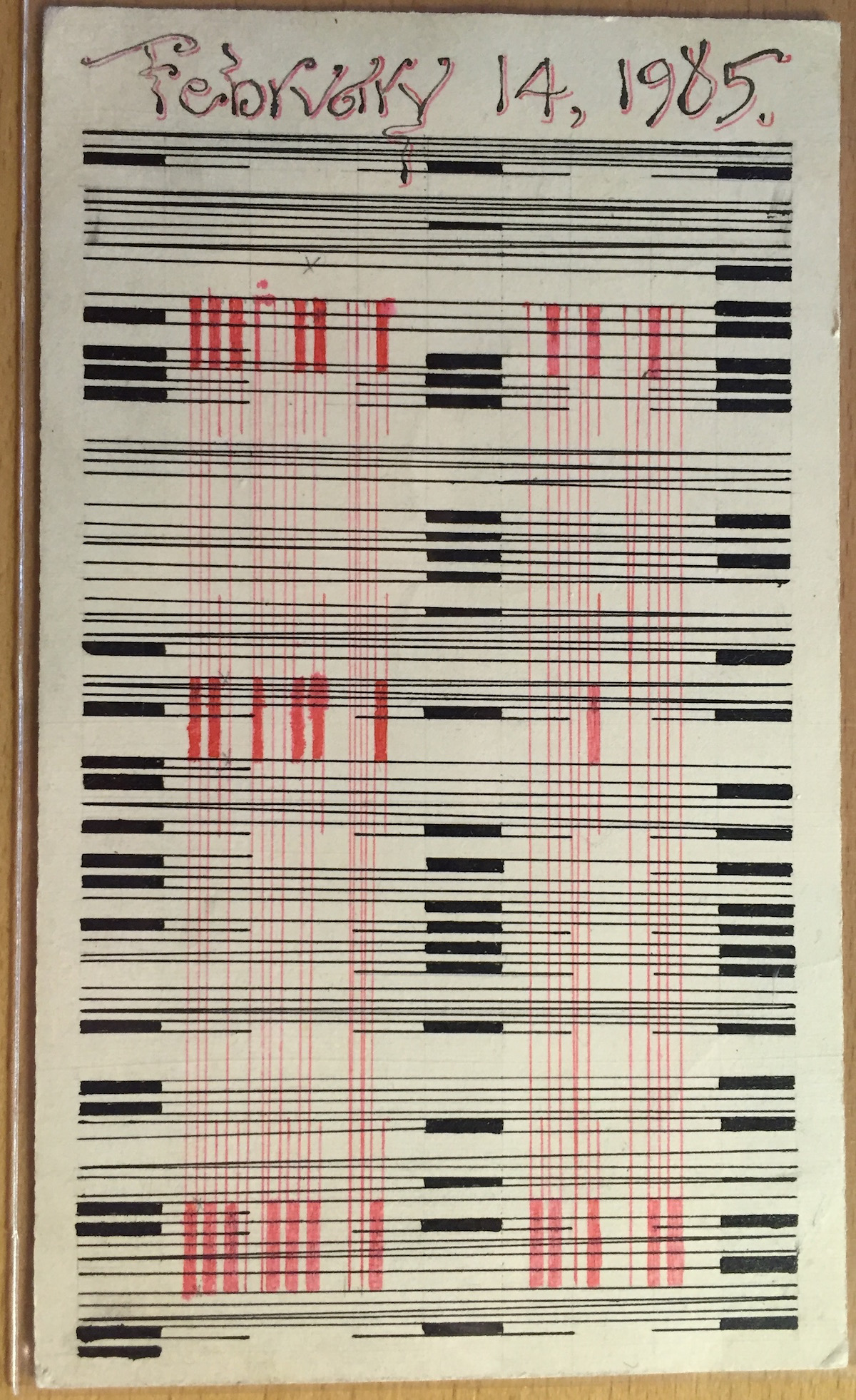


Kommentare (6)